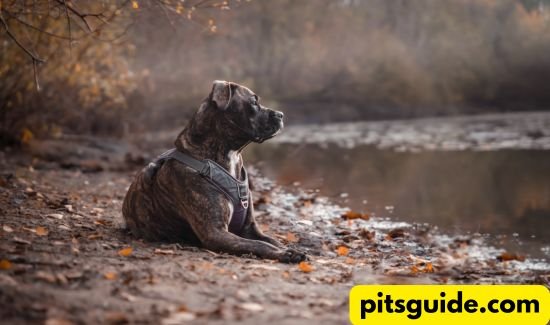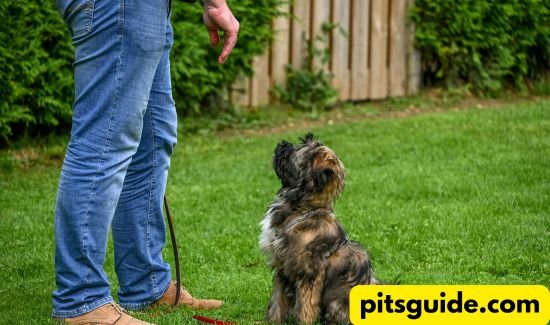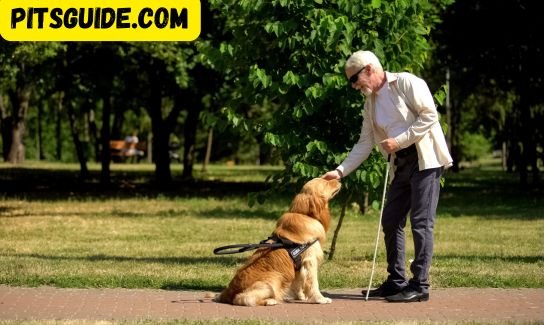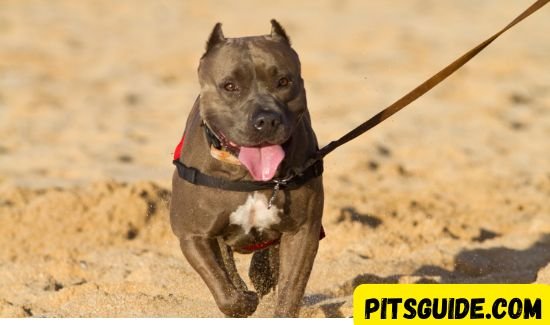Table of Contents
- Introduction
- Overview of Cancer in Dogs
- Importance of Early Detection in Pit Bulls
- Understanding Cancer in Dogs
- Common Causes and Prevalence
- What is Cancer?
- Key Takeaways
- Crucial Statistics and Facts
- Importance of Vigilant Monitoring
- Common Signs of Cancer in Pit Bulls
- Behavioral and Physical Symptoms
- Understanding the Warning Signs
- Common Cancer Types in Pit Bulls
- Mast Cell Tumors
- Hemangiosarcoma
- Lymphoma
- Other Types
- Cancer Staging in Dogs
- Introduction to the TNM System
- How Staging Affects Prognosis
- The Importance of Early Detection
- Vet Visits and Routine Checks
- How to Spot Subtle Changes
- Pit Bull Cancer Care During Treatment
- Managing Symptoms
- Pain Management Strategies
- Quality of Life Considerations
- Late-Stage Cancer Signs
- Behavioral Changes
- Physical Indicators
- Nutrition for Dogs with Cancer
- Ideal Diet for Cancer Management
- Supplement Recommendations
- Pain Management Options
- Medications for Cancer Pain Relief
- Complementary Therapies
- Deciding on Euthanasia
- Recognizing End-of-Life Signs
- Humane Considerations
- Support for Pit Bull Owners
- Emotional and Financial Assistance
- Veterinary Guidance
- Conclusion
- Importance of Awareness and Care
- Final Thoughts on Supporting Your Pit Bull
- Frequently Asked Questions (FAQ)
- Signs and Symptoms of Cancer in Pit Bulls
- Managing Cancer Treatment and Side Effects
- When to Consider Euthanasia
Pitbull Cancer Signs and Stages Explained Clearly
Did you know over 50% of dogs over 10 will get cancer? This is why Pit Bull Care is so important as they age. Knowing the signs of cancer can really help their health and happiness. We’ll look at cancer in Pit Bulls, from early signs to disease stages. This will help you spot cancer early and take action.
Key Takeaways
- More than 50% of dogs over 10 years old will face cancer.
- Common cancers in dogs include melanomas, mast cell tumors, and lymphomas.
- Early detection can lead to significantly better outcomes for affected dogs.
- Cancer treatments can vary widely in cost, often reaching thousands of dollars.
- Understanding the specific signs of cancer can aid in timely veterinary intervention.
- Certain breeds, including Rottweilers and Boxers, show higher rates of cancer incidence.
Understanding Cancer in Dogs
Cancer is a big problem for dogs, hitting about 25% of them in their lives. It’s more common as dogs get older. By the time they’re 10, half of them will get cancer. Knowing what causes dog cancer is key for pet owners.
Cancer means cells grow out of control. It shows in different ways. Common signs include:
- New lumps or swelling
- Wounds that refuse to heal
- Swollen lymph nodes
- Unexplained bleeding or discharge
It’s important to take your dog to the vet often, even when they’re older. This helps catch cancer early. Early signs might not be obvious until it’s too late.
Dogs can get many types of cancer. Some are very aggressive, like Hemangiosarcoma. Others, like Mast Cell Tumors, are common in dogs like pit bulls. Thanks to new treatments, there are ways to fight cancer in dogs.
Knowing about dog cancer helps owners watch for signs. This can lead to early treatment. It can make a big difference in a dog’s life.
| Cancer Type | Common Locations | Aggressiveness | Chemotherapy Response |
| Hemangiosarcoma | Heart, Liver, Spleen | Aggressive | Low Response |
| Lymphoma | Lymph Nodes, Spleen | Moderate to High | High Response |
| Mammary Gland Carcinoma | Mammary Glands | Variable | Variable |
| Mast Cell Tumor | Skin | Variable | Variable |
| Osteosarcoma | Bone | Highly Aggressive | Low Response |
| Transitional Cell Carcinoma | Bladder | Moderate | Variable |
The Importance of Early Detection
Finding cancer early in dogs, like American Pit Bulls, is key to better treatment. Many cancers do well with treatment early on. Knowing the signs of cancer can really help a dog live longer and feel better.
Going to the vet regularly is important for Pit Bulls. Vets can check for problems and suggest tests. About half of dogs over ten years old get cancer, so vet visits are very important.
Spotting small changes in behavior or body can help catch cancer early. This means dogs can get treatments like surgery or chemo. Knowing about Pit Bull health issues helps owners catch problems early.
https://youtube.com/watch?v=faoR8pLKAPU
Being proactive with care helps Pit Bulls stay healthy. Regular vet visits and watching for cancer signs make Pit Bulls happy and healthy.
Pit Bull Cancer Signs to Watch For
It’s important to know the signs of cancer in Pit Bulls. This helps get them to the vet fast. Owners should watch for symptoms that might mean their pet is sick.
- Unexplained weight loss – A sudden drop in weight can be a concerning symptom, often linked to underlying cancers.
- Persistent vomiting or diarrhea – These gastrointestinal issues may signal serious health problems, including tumors in dogs.
- Lumps or bumps – The presence of abnormal growths on the body, even between the toes, should be evaluated by a veterinarian.
- Increased lethargy or weakness – A noticeable decrease in energy levels and enthusiasm for activities often indicates serious health issues.
- Difficulty eating or swallowing – This may point to throat or mouth cancers and requires immediate attention.
- Labored breathing or coughing – These symptoms could suggest lymphoma symptoms, specially when lymph nodes appear swollen.
- Changes in bathroom habits – Straining to urinate or defecate, or noticing blood, could indicate cancerous conditions.
- Foul odors – Unpleasant smells from the mouth, nose, or anal regions may be associated with specific cancers.
- Non-healing wounds – Sores that do not improve can indicate a compromised immune system, possibly linked to cancer.
- Increased thirst or urination – This may suggest underlying diseases, including certain types of cancer.
These signs are key to spotting problems in Pit Bulls. Seeing a vet early can help manage their health better.
| Cancer Signs | Possible Conditions |
| Unexplained Weight Loss | Cancer, Metabolic Diseases |
| Persistent Vomiting | Cancer, Gastrointestinal Issues |
| Lumps or Bumps | Mast Cell Tumors, Lipomas |
| Labored Breathing | Lymphoma, Respiratory Issues |
| Foul Odors | Oral or Anal Cancers |
Watching for these signs helps keep Pit Bulls healthy. Owners can take steps to protect their pets’ health.
Common Types of Cancer Affecting Pit Bulls
It’s important to know about the cancers that affect Pit Bulls. These include anal sac adenocarcinoma, hemangiosarcoma, lymphoma, and more. Each cancer is different, some being more aggressive than others.
Mast cell tumors are special because they can be very aggressive. They are graded from I (least aggressive) to III (most aggressive). Surgery is the best way to treat these tumors.
After surgery, some dogs may get radiation therapy. This can help them live 2 to 5 years. If the tumor is too big, chemotherapy is used. Early detection is key for a good outcome.
Pets with aggressive tumors are at higher risk for more tumors. About 25% of purebred dogs get cancer. The risk goes up as dogs get older.
| Cancer Type | Common Age of Onset | Aggressiveness | Common Breeds Affected |
| Mast Cell Tumors | Middle to Older Age | Varies (Grade I – III) | Pit Bulls, Boxers, Bulldogs |
| Hemangiosarcoma | Older than 6 years | Highly aggressive | Various breeds |
| Osteosarcoma | Young Adults | Very aggressive | Long-limbed breeds |
| Mammary Gland Carcinoma | Older than 7 years | Varies | Un-spayed females |
The Staging of Cancer in Dogs
Knowing the stages of cancer in dogs is key. It helps pick the best treatments and understand the future. The TNM system is used to check how big the tumor is and if it has spread. This helps vets know how serious the cancer is.
The TNM System Explained
The TNM system is important for dog cancer staging. It looks at three main things:
- Tumor Size (T): This shows how big the tumor is and if it’s grown into nearby tissues.
- Regional Lymph Nodes (N): This checks if the cancer has spread to nearby lymph nodes.
- Metastasis (M): This shows if the cancer has moved to other parts of the body.
This system helps make a correct diagnosis. It also helps choose the right treatment. Dogs with cancer caught early usually do better than those caught late.
How Staging Affects Prognosis
The outlook for Pit Bulls with cancer depends on the stage. Catching cancer early means better treatment chances. Dogs with cancer in stages I or II often do well with surgery and chemo.
But, if cancer is advanced, treatment changes. It focuses on making the dog comfortable. Sometimes, the best choice is to end the dog’s suffering, even if treatment is available.
| Stage | Description | Potential Prognosis |
| Stage I | Localized tumor, no lymph node involvement | Generally good; high chance of effective treatment |
| Stage II | Localized tumor, some lymph node involvement | Moderate; treatment options available can be effective |
| Stage III | Extensive lymph node involvement | Guarded; treatment may prolong life but risks exist |
| Stage IV | Metastasis to distant sites | Palliative; comfort-focused treatment may be best |
Knowing the stage of dog cancer is very important. It shows why regular vet visits are key, as dogs get older. Cancers like lymphoma are often found too late, so early checks are vital.
Pit Bull Care During Cancer Treatment
Caring for a Pit Bull with cancer needs love and knowledge. Keeping their life good is key during tough times. Managing symptoms helps them feel better and get the treatment they need.
- Difficulty breathing
- Lack of appetite
- Disinterest in activities they once enjoyed
Their quality of life is more significant than their lifespan.There are numerous approaches to managing pain. These include:
- Oral medications from the vet
- Injections and topical treatments
- Radiation therapy
- Acupuncture
For dogs with bone cancer, gentle walks are good. They help keep the dog active and happy. Programs like the Pet Assistance & Wellness Program (PAW) by Cancer Care help with costs.
Pets can make people with cancer feel better. They can help with anxiety and depression. Having pets in hospitals can make everyone feel better.
Helping a Pit Bull with cancer is a big job. But, with support from others, it’s easier. Making sure your dog is comfortable helps both of you.
Recognizing Late-Stage Cancer Symptoms
It’s important for dog owners to know the signs of late-stage cancer. As cancer gets worse, dogs show more signs. Spotting these changes helps owners care for their dogs better.
Behavioral Changes to Note
Dogs with late-stage cancer often act differently. They might:
- Be very tired and not want to play
- Not want to do things they used to love
- Sleep a lot or have trouble sleeping
- Stay away from family and friends
- Show signs of being anxious, like pacing
These changes can mean the dog is feeling bad or is in pain.
Physical Symptoms That May Arise
Physical signs also show up in late-stage cancer. Some common ones are:
- Getting very skinny, even if they eat a lot
- Having trouble breathing or breathing hard
- Bleeding from places it shouldn’t, like the mouth or nose
- Seeing tumors or changes in tumors
- Having a big belly or pale gums
Knowing these signs is key for dog owners. It helps them decide how to keep their dog comfortable and happy.
How to Treat Cancer-Related Pain in Dogs
Managing pain in dogs with cancer is very important. It helps them live comfortably. Veterinarians use different treatments based on each dog’s needs.
Medications and Treatment Options
There are many ways to help dogs with cancer pain. Some common medicines include:
- Non-Steroidal Anti-Inflammatory Drugs (NSAIDs): These help with long-term pain. You might see:
- Carprofen (NoVo or Remedy®)
- Deracoxib (Duramax™)
- Firocoxib (Previvor®)
- Meloxicam (Metacam®)
- Opioids: For really bad pain, opioids are used. You might see:
- Morphine
- Buprenorphine
- Codeine
- Butorphanol
- Fentanyl
- Joint Supplements: These help with mild pain, like from arthritis.
- Adequan: This is a special shot that needs a vet’s prescription. It helps with osteoarthritis pain.
The right medicine depends on the dog’s health. Dogs with liver or kidney problems might need different medicines. This is because their bodies need to process the drugs well.
Some dogs also get help from things like acupuncture or hydrotherapy. These can help with pain too. Talking to a vet often is key to making sure the dog gets the best care.
Nutrition Tips for Dogs with Cancer
Nutrition is key for dogs with cancer. A special diet can help a lot. Finding the best diet for pit bulls with cancer means getting the right nutrients.
It’s important to know what a dog with cancer needs to eat. Studies say cancer cells use carbs for energy. So, carbs should be less than 25% of what a dog eats.
Protein is also very important. Dogs need 30-40% protein to keep their muscles strong. Healthy fats, like 25-40%, give energy and important fatty acids.
- High-Quality Proteins: Chicken, fish, and organ meats are good for nutrition.
- Omega-3 Fatty Acids: Fish oil has omega-3s that might shrink tumors.
- Fiber: More than 2.5% fiber helps with digestion.
- Superfoods: Broccoli, kale, and berries are good for health.
- Probiotics: They help keep the gut healthy, which is important during treatment.
Changing a dog’s diet slowly is important. This helps avoid stomach problems. Talking to a vet or nutritionist can help make a diet plan for a dog with cancer. A dog receiving cancer treatment can feel better and recover more quickly with the correct nutrition.
Even though there are not many special diets for cancer dogs, Hill’s® Prescription Diet® a/d® is a good choice. Taking care of a dog with cancer includes good nutrition. This helps them live better during tough times.
When to Consider Euthanasia for Your Pit Bull
Deciding to euthanize a dog is very hard for pet owners. It’s even harder when the dog has cancer. You must think about the dog’s pain, happiness, and life quality.
Here are signs it might be time to think about euthanasia:
- Unmanageable pain despite medication
- Inability to eat consistently
- Drastic weight loss
- Significant decline in behaviors that once brought joy
Talking to a vet is key during this tough time. They can help find the best way to treat your Pit Bull. This talk can also help you make a tough decision.
Keeping track of your dog’s life can help. For example, you can write down good and bad days. This can show how your dog is doing.
Vets say most dogs don’t die quietly in their sleep. This shows that the end of life can be unpredictable. Knowing this can help you prepare.
Talking about euthanasia with your family is important. It helps everyone understand the seriousness of the situation. It can be just as difficult to lose a pet as it is to lose a family member.
| Considerations for Euthanasia | Indicators | Comments |
| Pain Management | Unmanageable pain | Consult vet for pain relief options |
| Nutritional Intake | Persistent inability to eat | Loss of interest in food may signal distress |
| Behavioral Changes | Weight loss, loss of joy | Changes can indicate reduced quality of life |
| Safety Considerations | Risk to others due to aggression | Important if there are children or elderly at home |
The decision to euthanize a dog is hard. It involves medical facts and how your family feels. There are resources to help you make this choice. They ensure you consider all humane options.
Conclusion
Knowing the signs and stages of cancer in Pit Bulls is key for their care. Spotting symptoms early can make a big difference. It helps keep their life quality high even when they face health issues.
Regular vet visits are important for managing your Pit Bull’s health. They help catch problems early and can save money on vet bills. This shows how caring for dogs with cancer is very important.
When caring for a dog with cancer, getting help from vets is essential. They work with owners to make a care plan. This plan covers medical needs and emotional support, helping the dog through tough times.
FAQ
What are the common signs of cancer in Pit Bulls?
Pit Bulls with cancer might lose weight without trying. They could also vomit a lot or have trouble eating. Other signs include feeling very tired, breathing hard, and having lumps or bumps.
How can I detect cancer early in my Pit Bull?
Take your Pit Bull to the vet regularly. Watch for any changes in how they act or look. Look for swelling, bleeding, or changes in how much they eat.
What types of cancer are common in Pit Bulls?
Pit Bulls often get cancers like anal sac adenocarcinoma and hemangiosarcoma. They can also get lymphoma, mammary gland carcinoma, and mast cell tumors. Melanoma and osteosarcoma are other types they might get.
How does the TNM system work for staging cancer?
The TNM system looks at the tumor size (T), if lymph nodes are involved (N), and if it has spread (M). This helps vets figure out how big the cancer is and what treatment to use.
What should I do to care for my Pit Bull during cancer treatment?
Make your Pit Bull comfortable and manage their symptoms. Watch for side effects from treatment. Working closely with your vet is key.
What are the signs of late-stage cancer in dogs?
Late-stage cancer in dogs can make them very tired and not want to do things. They might sleep a lot, lose a lot of weight, have trouble breathing, and bleed a lot.
How can I manage pain in my dog with cancer?
You can use medicines like opioids and NSAIDs to help with pain. Acupuncture and hydrotherapy might also help make your dog feel better.
What nutritional considerations should I keep in mind for my Pit Bull with cancer?
Talk to a vet or a vet nutritionist about your Pit Bull’s diet. They can help you choose foods that are good for them while they’re fighting cancer.
When should I consider euthanasia for my Pit Bull with cancer?
If your Pit Bull is in a lot of pain, can’t eat, has lost a lot of weight, or doesn’t seem happy anymore, it might be time to think about euthanasia. Talk to your vet about your feelings.






















